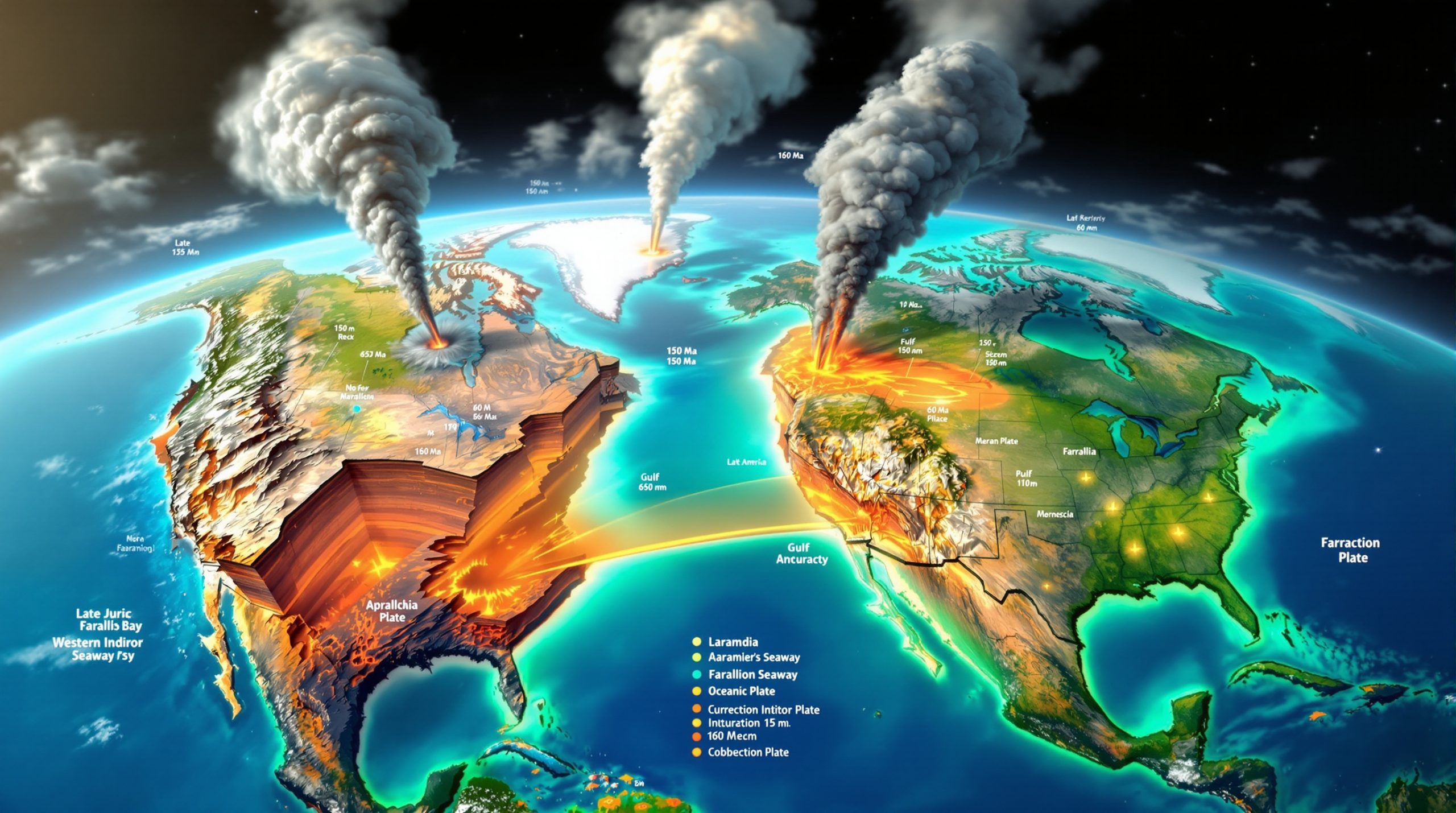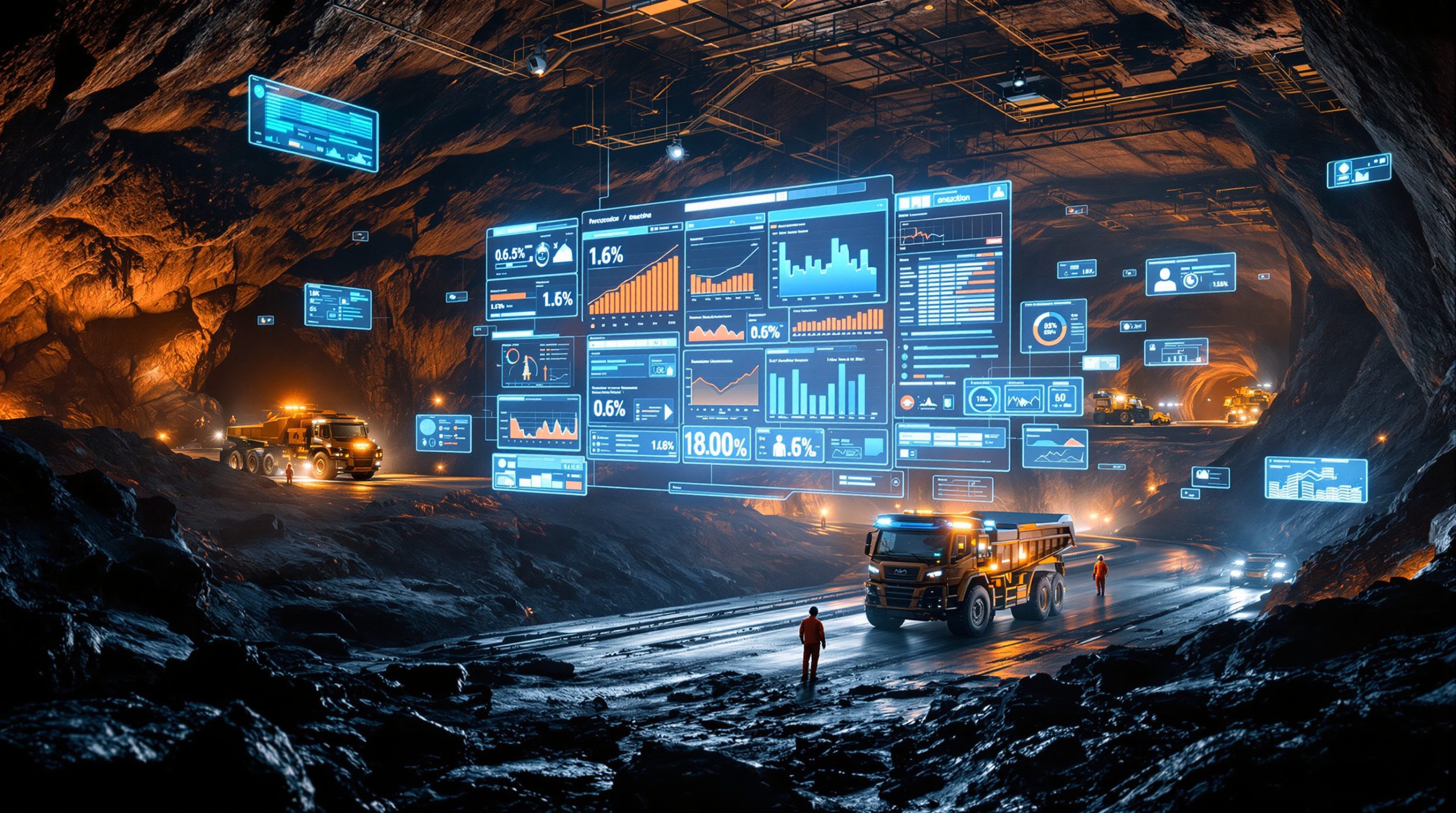Understanding China's New Rare Earth Export Controls
China implemented comprehensive export licensing requirements for seven critical rare earth elements effective January 1, 2025, marking a significant escalation in global trade tensions. These China rare earth export controls represent a strategic shift from open market access to regulated permissions for samarium, gadolinium, terbium, dysprosium, lutetium, scandium, and yttrium compounds.
The licensing framework operates under China's 2020 Export Control Law, which provides legal authority for restricting materials deemed critical to national security. Unlike outright export bans, this system allows approved applications to proceed, though processing timelines and approval criteria remain opaque to international buyers.
The Regulatory Architecture Behind Export Restrictions
China's Ministry of Commerce oversees the licensing process, while customs authorities enforce compliance at border crossings. The legal foundation stems from provisions within the Export Control Law that classify dual-use materials requiring government oversight. This regulatory approach mirrors international practices but applies to materials where China maintains dominant market position.
Export permits require detailed documentation regarding end-users, intended applications, and destination countries. Companies must demonstrate legitimate commercial purposes and provide assurances regarding technology transfer restrictions. The approval process involves multiple government agencies, creating potential delays for time-sensitive supply chains.
Implementation Timeline and Enforcement Mechanisms
The December 2024 announcement provided minimal transition period, with regulations taking effect January 1, 2025. Enforcement mechanisms include license verification at export terminals, penalties for unauthorized shipments, and potential blacklisting of non-compliant companies.
Customs officials received training on identifying controlled materials and verifying documentation authenticity. Digital tracking systems monitor shipments from processing facilities through export terminals, creating comprehensive oversight of controlled material flows.
Critical Elements Under Strategic Control
The seven targeted rare earth elements represent carefully selected materials with dual civilian and military applications. Each element possesses unique properties making substitution difficult or impossible in certain high-technology applications.
Controlled Rare Earth Elements and Strategic Applications
| Element | Primary Industrial Uses | Defense Applications | Annual Global Demand |
|---|---|---|---|
| Samarium | High-temperature magnets, aerospace alloys | Military radar systems, missile guidance | 2,400 tonnes |
| Gadolinium | MRI contrast agents, nuclear reactor control | Neutron absorption, submarine systems | 850 tonnes |
| Terbium | Green phosphors, LED technology | Night vision equipment, laser systems | 380 tonnes |
| Dysprosium | Electric vehicle motors, wind turbines | Naval propulsion, advanced communications | 1,200 tonnes |
| Lutetium | Medical imaging, research applications | Specialized detection equipment | 15 tonnes |
| Scandium | Aluminum alloys, fuel cells | Aircraft structures, advanced materials | 20 tonnes |
| Yttrium | Laser technology, superconductors | Defense electronics, guidance systems | 8,500 tonnes |
Industrial Dependencies Creating Vulnerability
Automotive manufacturers face immediate exposure through electric vehicle motor production. Tesla, General Motors, and Ford rely heavily on dysprosium-enhanced neodymium magnets for traction motor efficiency. These high-performance magnets require specific rare earth compositions impossible to replicate with alternative materials.
Wind turbine manufacturers similarly depend on controlled elements for direct-drive generator systems. A single 3-megawatt offshore wind turbine contains approximately 600 kilograms of rare earth permanent magnets, with terbium and dysprosium comprising 8-12% of total magnet composition.
Defense contractors represent the most strategically sensitive sector affected by export controls. Advanced weapons systems, radar installations, and communication equipment integrate rare earth elements throughout electronic components and propulsion systems.
Global Supply Chain Disruption Analysis
Market response to China's rare earth export controls demonstrated immediate price volatility across affected materials. Furthermore, rare earth tensions gained 15-20% during the first week of January 2025, reflecting investor concerns about supply security rather than fundamental demand changes.
Immediate Market Reactions and Price Movements
Dysprosium oxide prices surged from $260 per kilogram to $380 per kilogram between January and December 2024, representing 46% appreciation driven by speculation around potential restrictions. Similar price pressures affected terbium and gadolinium compounds, though market liquidity remained sufficient to meet existing contracts.
Manufacturing companies with established inventory buffers experienced minimal immediate impact. However, firms operating lean supply chains faced procurement challenges as suppliers required extended lead times for license applications and approvals.
Strategic Sector Vulnerability Assessment
Defense contractors, electric vehicle manufacturers, and renewable energy companies face the greatest exposure to China's rare earth export controls, with some sectors potentially experiencing 6-12 month supply chain adjustments while alternative sourcing arrangements develop.
The automotive sector's vulnerability stems from concentrated sourcing patterns and limited alternative suppliers. Major European and American automakers source rare earth magnets primarily from Chinese manufacturers, creating potential production bottlenecks if export licenses face delays or restrictions.
Renewable energy installations scheduled for 2025-2026 deployment may encounter component shortages affecting project timelines. In addition, wind farm developers are reassessing turbine procurement strategies, with some considering gear-driven alternatives requiring fewer rare earth materials.
Geographic Alternatives and Processing Limitations
Australia's Lynas Rare Earths operates the world's only significant non-Chinese rare earth separation facility in Malaysia, processing approximately 10,500 tonnes annually. However, this capacity represents less than 5% of global demand, highlighting the processing bottleneck beyond mining production.
North American projects remain heavily dependent on Chinese processing capabilities. Mountain Pass mine in California produced 43,000 tonnes of rare earth concentrate in 2024 but ships material to China for separation and refinement due to domestic infrastructure limitations.
Strategic Timing and Geopolitical Motivations
China's decision to implement export controls in December 2024 coincided with escalating trade tensions and semiconductor restrictions imposed by the United States. Furthermore, China's export controls timing suggests coordinated policy response designed to create leverage in ongoing diplomatic negotiations.
Trade Negotiation Leverage and Diplomatic Positioning
Export restrictions provide China with asymmetric advantages in trade discussions, given limited short-term alternatives for affected materials. This leverage becomes particularly significant as Western governments accelerate domestic manufacturing initiatives requiring stable rare earth supplies.
The announcement preceded anticipated 2025 trade negotiations between the Trump administration and Chinese leadership. Previous trade disputes demonstrated China's willingness to restrict rare earth exports as diplomatic tools, notably during the 2010 dispute with Japan over territorial claims.
Dual-Use Technology Protection Framework
China's Export Control Law defines dual-use items as materials serving both civilian and military purposes. Consequently, rare earth elements clearly fall within this classification, given their integration in defense systems, communication equipment, and advanced manufacturing processes.
National security justifications align with international export control practices implemented by the United States and European Union. However, China's dominant market position creates unique leverage unavailable to other nations implementing similar restrictions.
Domestic industrial policy objectives also influence export control decisions. Restricting raw material exports while encouraging domestic value-added processing supports China's manufacturing competitiveness and technological advancement goals.
China's Comprehensive Market Dominance
China's rare earth supremacy extends far beyond mining production to encompass processing, refining, and manufacturing capabilities. This vertical integration creates multiple dependency points throughout global supply chains.
Global Production Leadership Statistics
Global Rare Earth Mine Production by Country (2024)
| Country | Annual Production | Market Share | Processing Capacity |
|---|---|---|---|
| China | 240,000 tonnes | 70% | 85% of global capacity |
| United States | 43,000 tonnes | 12.5% | <5% of global capacity |
| Myanmar | 38,000 tonnes | 11% | Minimal processing |
| Australia | 22,000 tonnes | 6.4% | Limited separation capability |
| All Others | 7,000 tonnes | 2% | Negligible processing |
Processing Infrastructure Monopoly
China controls approximately 85-90% of global rare earth refining and separation capacity, creating bottlenecks even for materials mined elsewhere. This processing dominance results from decades of infrastructure investment, technological development, and integrated supply chain coordination.
Establishing competing processing facilities requires capital investments between $500 million and $1.5 billion, depending on scale and technological sophistication. Environmental compliance, skilled workforce development, and regulatory approvals extend development timelines to 5-10 years minimum.
The Baotou Rare Earth Industrial Park in Inner Mongolia represents the world's largest rare earth processing hub, housing separation facilities, magnet manufacturing, and downstream component production. This integrated approach provides cost advantages and quality control throughout the value chain.
Competitive Advantages Through Integration
Chinese rare earth companies benefit from vertical integration spanning mining operations through finished component manufacturing. This integration enables cost optimization, quality assurance, and rapid response to market demand fluctuations.
Processing costs in China remain 30-40% lower than potential Western facilities due to economies of scale, established infrastructure, and optimised logistics networks. These cost advantages persist despite recent environmental compliance improvements and wage increases.
Technology transfer restrictions historically limited knowledge diffusion to international competitors. Chinese companies developed proprietary separation techniques, environmental controls, and manufacturing processes unavailable to potential rivals.
International Response Strategies and Market Adaptation
Western governments and private companies are implementing comprehensive strategies to reduce rare earth dependency through diversified sourcing, technological innovation, and strategic partnerships.
Government Investment in Alternative Development
The United States allocated $45 million through the Defense Production Act in 2024 to support domestic rare earth processing capabilities. Additional funding targets recycling technologies, alternative material research, and strategic stockpiling programs.
The European critical materials facility, adopted March 2024, establishes targets for 10% domestic extraction of strategic materials by 2030. This initiative includes funding for exploration projects, processing infrastructure, and recycling facilities across member nations.
Japan's public-private partnership maintains strategic stockpiles equivalent to approximately 60 days of consumption for critical rare earth materials. Similar programs in South Korea and Australia's strategic reserve provide buffer capacity during supply disruptions.
Private Sector Innovation and Substitution Research
Technology companies are investing heavily in rare earth substitution research and recycling technologies. Current recycling rates below 1% globally represent significant improvement opportunities for urban mining and circular economy initiatives.
The U.S. Department of Energy's Critical Materials Innovation Hub invested $140 million between 2020-2025 developing rare-earth-free permanent magnets and improved extraction efficiency. These research programmes target breakthrough technologies eliminating dependency on controlled materials.
Automotive manufacturers are exploring alternative motor designs reducing rare earth requirements. Ferrite magnets and reluctance motors offer potential substitutes for certain applications, though performance trade-offs remain significant for high-efficiency systems.
Alternative Producer Capabilities and Development Potential
Several countries possess rare earth deposits and emerging processing capabilities positioned to challenge Chinese dominance over extended timeframes.
Australia's Strategic Position and Expansion Plans
Australia holds approximately 21% of global rare earth reserves across multiple deposits including Mount Weld, Nolans Bore, and Browns Range. Lynas Rare Earths operates the most advanced non-Chinese separation facility, with expansion plans targeting 12,000 tonnes annual capacity by 2025.
Additional processing infrastructure development includes Lynas's planned Kalgoorlie facility in Western Australia, designed to reduce dependence on Malaysian operations and provide supply chain resilience. Government support through the Critical Minerals Facility provides funding for infrastructure development and technology advancement.
Australian companies benefit from stable regulatory environments, established mining expertise, and strategic partnerships with allied nations seeking supply chain diversification.
North American Production Renaissance
MP Materials operates the Mountain Pass mine in California, representing the largest rare earth mining operation outside China. The facility produced 43,000 tonnes of concentrate in 2024, with Stage III processing development targeting domestic separation capabilities by 2026.
Canadian projects include Saskatchewan Research Council's rare earth processing facility with 4,000 tonne annual capacity. Major development projects encompass Vital Metals' Nechalacho deposit and Energy Fuels' Donald project, though commercial production timelines extend beyond 2027.
Furthermore, US executive order on minerals support through the Defense Production Act and Infrastructure Investment Act provides funding for domestic processing infrastructure. Strategic partnerships between mining companies and defense contractors accelerate development for critical applications.
Emerging European and Regional Initiatives
The European Raw Materials Alliance coordinates member state efforts to develop domestic rare earth capabilities. Finland's Terrafame explores rare earth recovery from existing mining operations, while Estonia evaluates tailings reprocessing for strategic materials.
Greenland's Kvanefjeld deposit represents one of the world's largest undeveloped rare earth resources, though political considerations and environmental concerns complicate development timelines. Recent elections resulted in mining permit suspensions pending environmental review.
Vietnam emerged as a significant rare earth producer through collaboration with Chinese processing companies. However, environmental regulations and bilateral agreements limit independent development potential.
Investment Strategies for Market Volatility
Rare earth market volatility creates both opportunities and risks for investors seeking exposure to critical materials amid geopolitical tensions.
Risk Assessment Framework for Resource Investments
Geopolitical risk represents the primary investment consideration for rare earth exposure. Export controls, trade disputes, and diplomatic tensions create price volatility exceeding fundamental supply-demand dynamics.
Technology disruption potential affects long-term demand projections as substitution research and recycling technologies develop. Investors must evaluate breakthrough risks potentially reducing rare earth requirements for specific applications.
Regulatory environment changes in producing countries influence project development timelines and operational costs. Environmental regulations, mining permit processes, and local community relations affect investment returns and project viability.
Portfolio Diversification and Market Timing Strategies
Geographic diversification across multiple producing regions reduces exposure to single-country policy changes. Investment strategies spanning Australian, North American, and emerging producers provide portfolio resilience during supply disruptions.
Value chain positioning from mining through end-use applications offers different risk-return profiles. Upstream mining investments provide commodity exposure, while downstream magnet manufacturers benefit from processing margins and customer relationships.
Market volatility creates opportunities for experienced investors comfortable with commodity cycles. Price fluctuations driven by policy announcements rather than fundamental changes may present tactical trading opportunities for sophisticated investors.
Long-Term Resource Security and Strategic Planning
Complete supply chain diversification away from Chinese rare earth dominance requires 8-12 years minimum, considering exploration, development, and processing infrastructure establishment timelines.
Infrastructure Development Requirements and Timelines
Rare earth mining projects typically require 7-15 years from discovery to commercial production, encompassing exploration, feasibility studies, permitting, construction, and commissioning phases. Processing infrastructure development adds additional complexity and capital requirements.
Establishing integrated rare earth separation facilities demands specialised expertise, environmental compliance systems, and skilled workforce development. Technology transfer restrictions limit access to proven processing techniques, extending development timelines for new facilities.
Strategic stockpiling programmes provide interim supply security while alternative sources develop. Government reserves and private sector inventory buffers create time for supply chain restructuring without production disruptions.
Economic Implications of Supply Chain Restructuring
Supply chain diversification involves significant cost increases for affected industries. Alternative processing facilities require premium pricing to justify capital investments and operational expenses above current Chinese suppliers.
Manufacturing reshoring initiatives gain momentum as companies evaluate supply security against cost optimisation. Domestic rare earth processing supports broader manufacturing ecosystem development and technological sovereignty objectives.
Innovation incentives emerge from supply constraints as companies invest in efficiency improvements, substitution research, and recycling technologies. These technological advances may reduce overall rare earth consumption whilst improving performance characteristics.
Future Demand Drivers and Market Evolution
Global energy transition and technological advancement create unprecedented rare earth demand growth across multiple sectors.
Electric Vehicle Market Expansion Impact
Global electric vehicle sales reached 13.6 million units in 2024, representing 16% of total automotive sales. Projections indicate 40-45 million annual EV sales by 2030, driving significant rare earth magnet demand growth.
Each electric vehicle motor requires approximately 2-5 kilograms of rare earth permanent magnets, depending on motor design and performance specifications. Premium vehicle segments utilise higher rare earth content for maximum efficiency and power density.
Automotive manufacturer strategies increasingly emphasise supply chain security alongside cost optimisation. Long-term supply agreements, strategic partnerships, and vertical integration initiatives reflect industry recognition of critical minerals energy security.
Renewable Energy Infrastructure Development
Wind energy capacity additions reached 117 gigawatts globally in 2024, with cumulative installations exceeding 1,100 gigawatts. Direct-drive wind turbines require approximately 200 kilograms of rare earth magnets per megawatt of capacity.
Offshore wind development accelerates rare earth demand as larger turbines utilise permanent magnet generators for reliability and maintenance advantages. Harsh marine environments favour magnet-based designs over alternative technologies requiring complex gearing systems.
Solar energy growth creates additional rare earth demand through inverter systems, grid-tie equipment, and energy storage integration. Grid modernisation initiatives worldwide incorporate rare earth materials in smart grid technologies and power management systems.
Defense and Technology Sector Requirements
Advanced defense systems integrate rare earth elements throughout radar installations, communication equipment, and weapons guidance systems. Military modernisation programmes worldwide drive consistent demand for high-performance rare earth materials.
Telecommunications infrastructure development, including 5G networks and satellite systems, requires rare earth materials for signal processing, amplification, and transmission components. Data centre growth similarly incorporates rare earth materials in server components and cooling systems.
Emerging technologies including quantum computing, advanced sensors, and autonomous systems represent potential new demand sources for specialised rare earth applications.
Environmental and Sustainability Considerations
Rare earth supply chain development must balance security objectives with environmental sustainability and responsible mining practices.
Sustainable Mining and Processing Development
New rare earth projects face stringent environmental regulations and community engagement requirements. Modern mining operations implement comprehensive environmental management systems, water treatment facilities, and habitat restoration programmes.
Processing technology advancement focuses on reducing environmental impact through improved separation efficiency, waste minimisation, and closed-loop water systems. These improvements increase capital costs but provide long-term operational advantages and regulatory compliance.
Life cycle assessment considerations influence project development as companies evaluate environmental impacts throughout mining, processing, manufacturing, and end-use phases.
Circular Economy Integration and Recycling Technologies
Urban mining initiatives target rare earth recovery from electronic waste, automotive components, and industrial equipment. Current recycling rates below 1% globally represent significant improvement opportunities through technology development and policy incentives.
Advanced recycling processes can recover high-purity rare earth materials from end-of-life products including hard disk drives, electric vehicle motors, and wind turbine generators. These technologies reduce primary mining requirements whilst providing alternative supply sources.
Circular economy principles integrate into product design as manufacturers consider end-of-life material recovery during development phases. Design for recycling approaches facilitate material recovery and reduce overall environmental impact.
China rare earth export controls represent a watershed moment in global supply chain management, forcing governments and companies worldwide to reassess strategic material dependencies. The comprehensive nature of China's dominance across mining, processing, and manufacturing creates complex challenges requiring coordinated international responses spanning multiple years. For instance, the analysis of export control consequences demonstrates how alternative sources exist and technologies continue advancing. However, the transition toward diversified rare earth supply chains demands sustained investment, policy support, and industry collaboration to achieve meaningful supply security in critical material sectors.
Ready to Capitalise on the Next Critical Mineral Discovery?
Discovery Alert's proprietary Discovery IQ model delivers real-time alerts on significant ASX mineral discoveries, including critical materials like rare earths, turning complex geological data into actionable investment insights. With China's export controls creating unprecedented opportunities in the critical minerals sector, understand why historic discoveries can generate substantial returns by exploring major breakthroughs that delivered exceptional outcomes for early investors.




